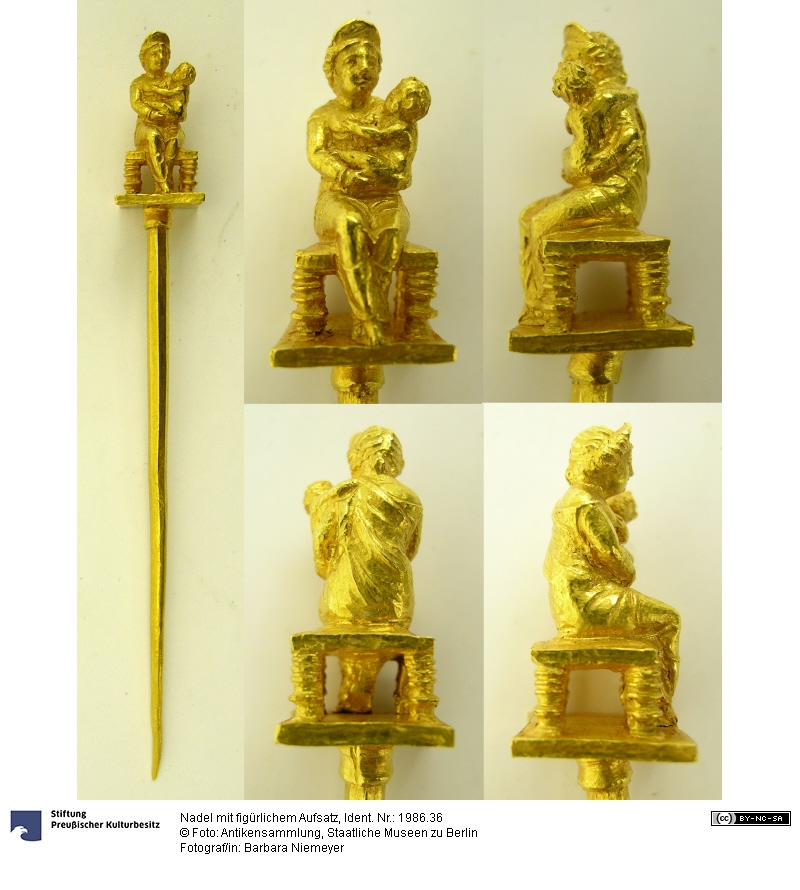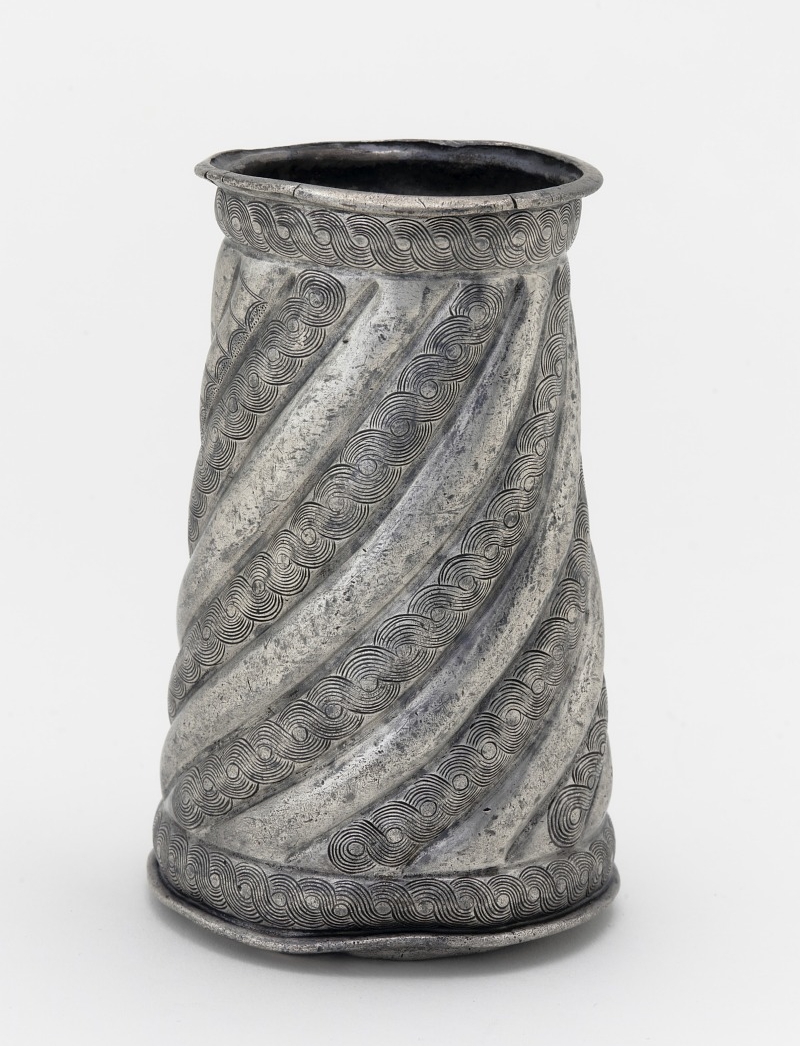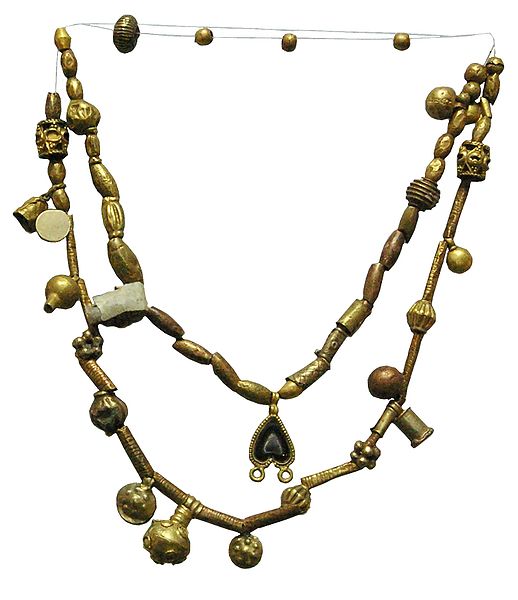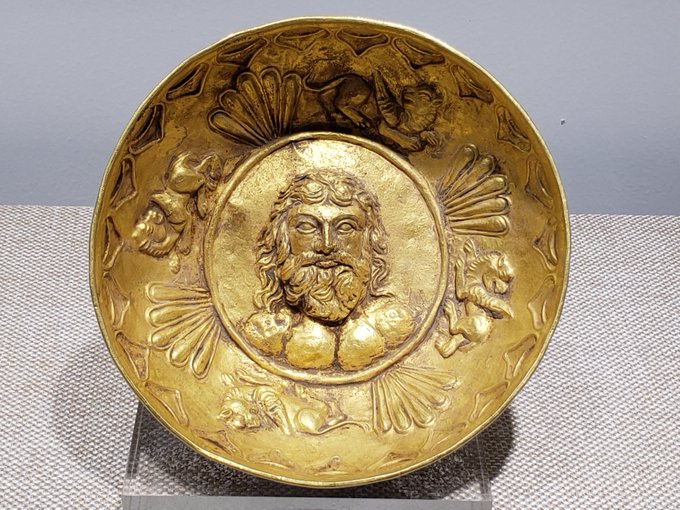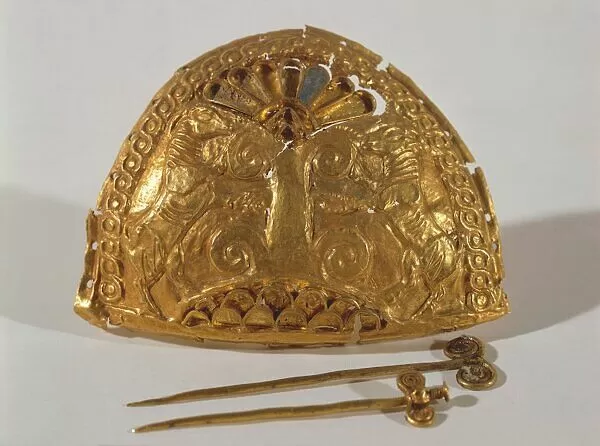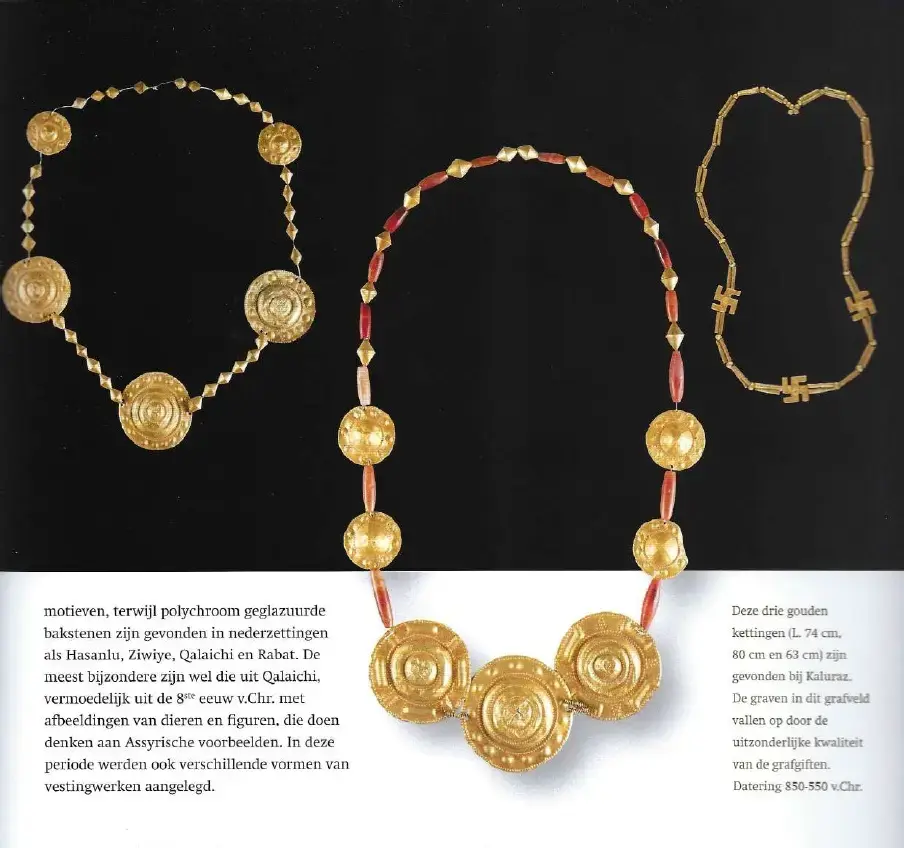Silver Elamite vessel from Mardvasht [in the vicinity of Persepolis], Iran, is dated to 2200 BCE.
The vessel is a tall beaker: 9.3 cm high, 9 cm rim diameter, 10.5 base diameter, weight 605 g. [D. Potts]
It was found in 1996 in a ceramic vessel among other objects [three long bronze pins, a bronze belt buckle with an engraved palm motif, a large number of semi-precious stone beads].
Vessel is now part of the Iran National Museum collection.

Source Daniel Potts

Museum (Hinz 1969, 15-16). To the right: detail of a silver
pin from Gonur Depe (Sarianidi 2002, 231).
[Martina Morello]


The base and rim are decorated with lightly engraved forms that are probably meant to represent stylized mountains.
“In relatively high relief, one side of the vessel shows a full-figure, standing female wearing a fleece-like kaunakes and a tiara or headband. She holds two flat, rod-like objects, one in either hand, that somewhat resemble headless sceptres3. The front parts of her feet, shown in profile, protrude from the base of her dress. The opposite side of the vessel shows a second, seated female, similarly attired in a fleece-like kaunakes, but with long flowing hair and a braid or hairband set high on her head. She also wears a three-strand necklace and a single bracelet on her exposed, right wrist.” [D. Potts, pp. 166-170]

(courtesy Institute of Anthropology, Mexico City, and Ebrahim Khadem Bayat)
After D. Potts
Necklace described by D. Potts a three-strand necklace, may be in my opinion a pectoral / torc.
I see her wearing a headband, with hair decorated with small ornaments.
‘Silver cup (item Q) from Marvdasht, Fars, with Linear-Elamite inscription on it, from the 3rd millennium BC and kept in the National Museum of Iran. According to Desset, the inscription reads “For the Lady of Marapsha (toponym), (named) Shumar-asu, I made this silver vase. In the Temple that will be known by my name, Humshat, I dedicated it with goodwill for you.“‘
https://en.wikipedia.org/wiki/Linear_Elamite
- Human iconography on metal vessels from Bronze Age Middle Asia; Martina Morello https://www.academia.edu
- Treasures of Ancient Margiana, Nadezhda A Dubova https://www.academia.edu
- An article “A Frenchman ‘cracks’ an undeciphered writing over 4000 years old, calling into question the only invention of writing in Mesopotamia” https://www.sciencesetavenir.fr
- Puzur-Inšušinak and the Oxus Civilization (BMAC): Reflections on Šimaški and the geo-political landscape of Iran and Central Asia in the Ur III period; Daniel Potts https://doi.org/10.1515/ZA.2008.010
- François Desset: On The Decipherment Of Linear Elamite Writing [2021] https://www.thepostil.com/author/francois-desset/



